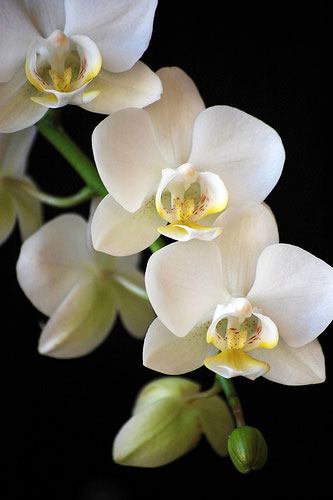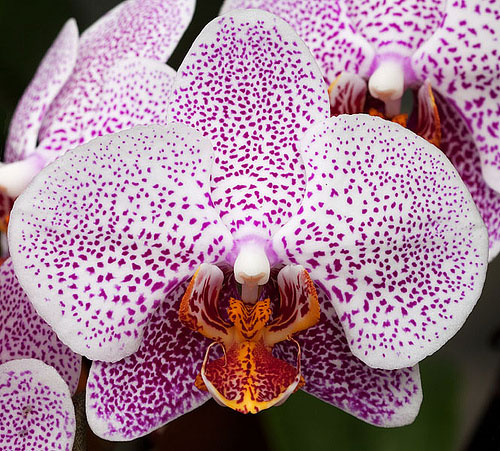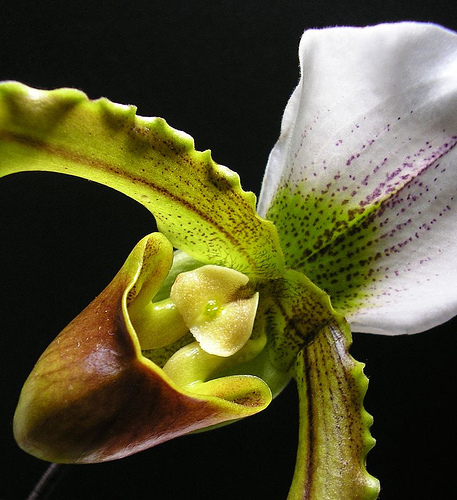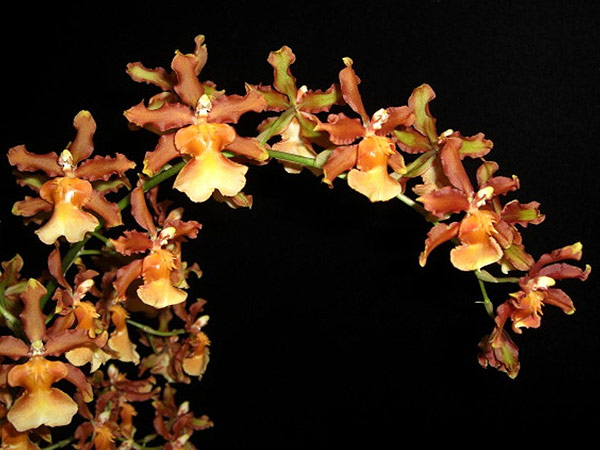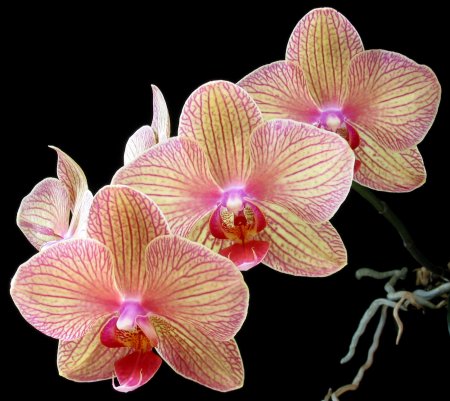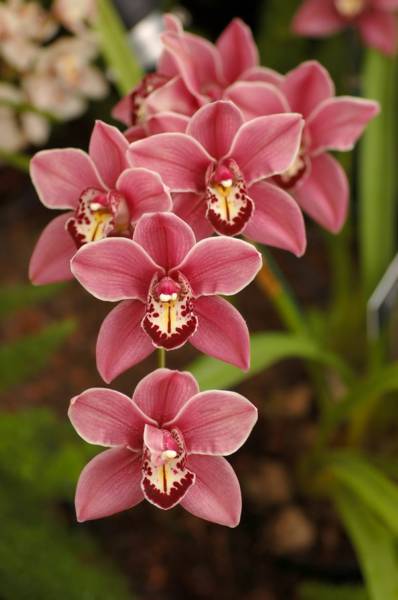Some of the orchids we regularly carry are:
3", 4" and 6" Phalaenopsis in a wide range of colors
Paphiopedilums
Oncidiums
4", 5" and 6" Dendrobiums in a wide range of colrs
Miltonias
Cymbidiums
Maxillaria tenuifolia
Beallara Marfitch 'Howard's Dream'
Cultural Elements for Orchids
Many orchids make wonderful house plants, since they like the same temperatures as humans. Having success with your orchids requires proper balance of five cultural elements: water, filtered light, regular feedings, proper air movement, and humidity. Most orchids die of overwatering, so if your plant is potted in bark, watering once a week is generally sufficient. If your plant is potted in moss, water only when the top feels dry. If in doubt, wait a day. Be sure to water your Phalaenopsis at the base of the plant. If water remains in the crown of Phalaenopsis plants (where the leaves join in the center), it can provide a perfect environment for crown rot. If this happens tip the plant at an angle and allow the water to drain out or use a paper towel to blot the water. The amount of light and heat your plant receives will also affect how soon your orchid needs watering. In summer months your plants will need more frequent watering and in winter they will need less.
Orchids should never be put in direct sunlight, but then too little light will prevent your plant from flowering and will cause weak growth. Orchids should receive filtered light which will cause them to be a grassy green color. Insufficient light is the most common cause of orchids not to re-bloom.
Remember to feed your orchids weakly, weekly. They will need to be fertilized three waterings in and row and the fourth watering should just be clear water in order to flush any accumulated salts from the potting mix. Any balanced orchid fertilizer such as 20-20-20 can be used. The three elements in all fertilizers are nitrogen, phosphorous, and potassium. Nitrogen helps make plants green, and makes them grow faster. Phosphorus helps the plant bloom, and potassium helps increase root growth.
Be sure to provide your orchids with sufficient air movement with a fan or by placing them near an open window or on a porch. Your plants will also need between 50-70% humidity. This can be achieved my regular misting or by placing them on a shallow tray that is filled with pebbles and water just the tops of the pebbles. Set your orchid pots on the pebbles.
Most orchids are epiphytes and their roots need a potting mixture that will allow them to dry out after each watering. Never pot your orchid plant in soil, since the roots will not be able to receive enough air and will be unable to dry out and will rot.
